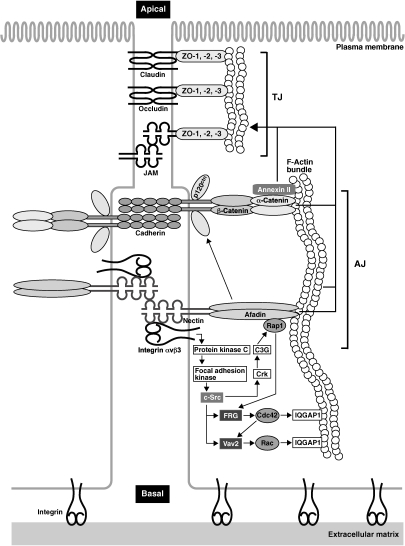Figure 2.
Nectin-induced formation of AJs and TJs. Trans-interacting nectin at the initial cell–cell adhesion induces the activation of Rap1, Cdc42, and Rac mediated by c-Src, Crk, C3G, FRG, and Vav2. This nectin-induced signaling is dependent on integrin αvβ3, which physically associates with nectin, and its downstream signaling molecules protein kinase C and focal adhesion kinase. Activated Cdc42 and Rac reorganize the actin cytoskeleton and recruit the cadherin–catenin system to the nectin-based cell–cell adhesion sites. At this phase, cadherin has only weak adhesion activity. However, afadin interacting with activated Rap1 also associates with p120ctn, leading to increased adhesion activity of cadherin and the establishment of cadherin-based AJs. After the formation of AJs, both the nectin–afadin and cadherin–catenin systems cooperatively play an essential role in the formation of TJs as well as AJs. The reorganized actin cytoskeleton and actin binding proteins including annexin II and IQGAP1 are also involved in the formation of TJs.

